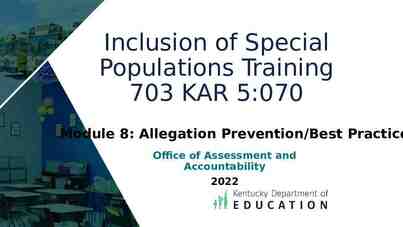OSHA REGULATION FOR RF RADIATION EXPOSURE Bob Curtis US OSHA
16 Slides137.50 KB

OSHA REGULATION FOR RF RADIATION EXPOSURE Bob Curtis US OSHA Directorate of Technical Support

Current OSHA RF Standards General Industries (1910.97) – 10 mW/cm2, 6 min TWA (1966 ANSI) – Design of RF Warning Sign – Voluntary Language - Not Enforceable Telecommunications (1910.263) – Recognizes PPE Controls Construction – 10 mW/cm2, no averaging time

Obviously Outdated Exposure Limit is from 1966 ANSI – Not frequency dependent – Does not address induced current limits Incomplete on Hazard Communication – Describes RF sign but not where to use it – One warning sign for all conditions Incomplete on RF Safety Program Elements

“Modifications” to OSHA Standards OSHA Directives to Inspectors and Official Interpretation Letters – Acceptance of newer ANSI RF sign – ANSI Laser Standard Recommended in lieu of outdated OSHA standard. – Guidance for using RF PPE Education of Employers, Employees, and Compliance Staff

Enforcement of Consensus Standards Guidance for Enforcement of OSHA Standards (e.g., How to measure RF) Support and Criteria for Citations of OSHA’s General Duty Clause Establishes Criteria for Safety and Health Programs When Required

General Duty Clause OSH Act Section 5(a)(1) Employers shall provide work which is free from recognized hazards that are causing or are likely to cause death or serious physical harm.

General Duty Clause Criteria At Least One Employee Exposed There is a Recognized Serious Hazard There Are Feasible Means to Correct The Employer Knew (or should have known with reasonable diligence) Rely Heavily on Consensus Standards Even if in Conflict with Existing Standards

Establishing Employer Knowledge and Feasible Controls Common Industry Practice Consensus Standards “5(a)(1) Letter” to Employers – Usually based on Consensus Standards – e.g., ANSI, TLV’s

Existing Generic Standards Hazard Communications Hazardous Waste & Emergency Response Construction Safety & Health Plan Personal Protective Equipment Lock Out/Tag Out (of Hazardous Energy) All of These Could be Cited Based on Violation of Consensus Standards

Safety & Health Programs OSHA Working to Require Safety & Health Programs Many State OSHAs Already Require Required for Federal Agencies Required by International Standards (ISO) Good Employers will Implement Regardless of OSHA

RF Protection Program Utilization of RF source equipment which meet applicable RF standards when new and during its lifetime. RF hazard identification and periodic surveillance by a competent person. Identification and Control of RF Hazard Areas.

RF Protection Program (cont.) Implementation of controls and SOP’s to reduce RF exposures to levels in compliance with applicable guidelines. RF safety and health training to ensure that all employees understand the RF hazards and control methods used. Employee involvement in the structure and operation of the S&H Program.

RF Protection Program (cont.) Implementation of an appropriate medical surveillance program Periodic (e.g., annual) reviews of the program to identify and resolve deficiencies Assignment of responsibilities, including adequate authority and resources to implement and enforce the program.

1997 Law Promotes Consensus Standards Agencies to Adopt Applicable Consensus Standards Rather Than Developing Their Own Agencies Must Justify Exceptions “Consensus” Standard Implies Open Discussions and All Views Considered Agencies Encouraged to Participate in Developing Consensus Standards

Role of Regulators in Consensus Standards Development Ensure All Stakeholder’s Views Are Heard Promote Worker Safety Through Justifiable and Rational Requirements Ensure Public and Open Process of Standards Development. Provide Credibility to the Final Product Provide Technical Expertise

RF Priority Needs ISO Standards which prescribe RF Safety Program Elements, such as the Ionizing Radiation and Laser Safety Programs ISO Standards which support specific RF Program Elements, such as for testing of RF Protective Clothing Implementation of RF Safety Programs






